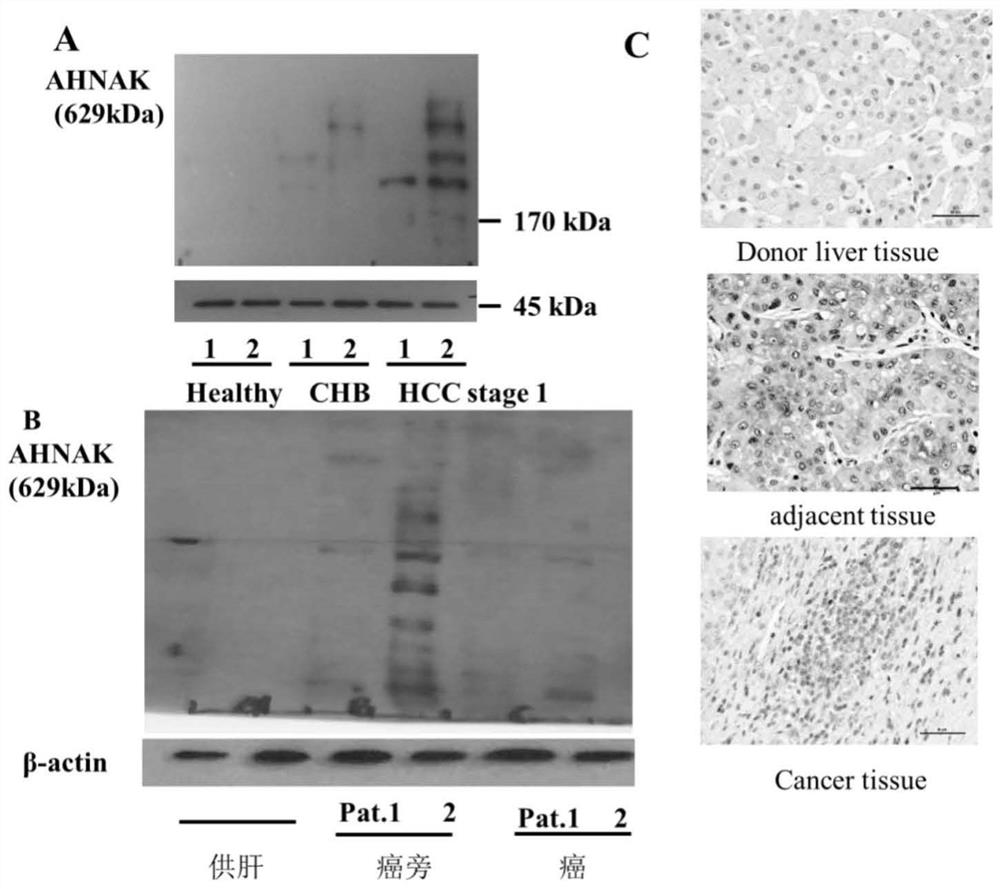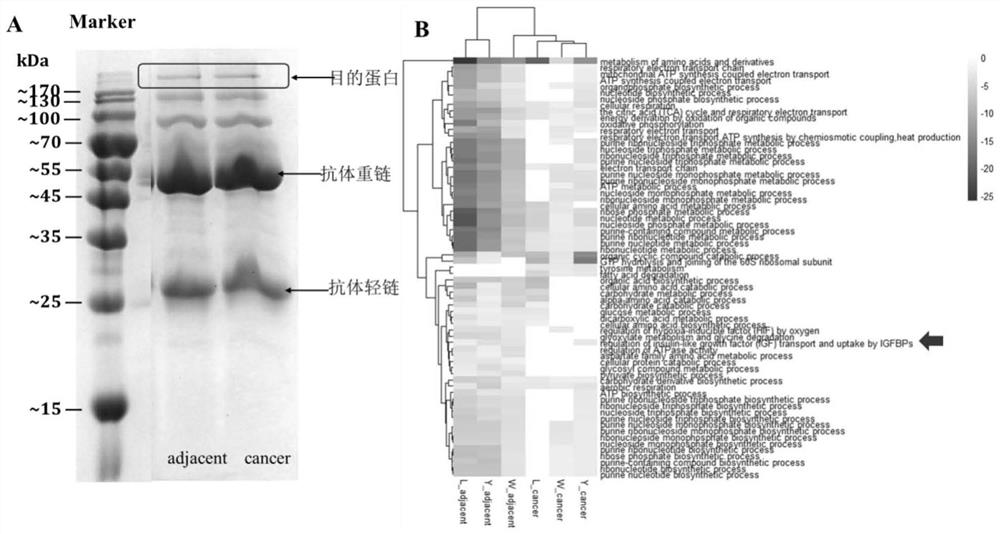Application of AHNAK in inhibiting generation of drug resistance of EGFR-TKI drug in HCC
A technology of EGFR-TKI and drug resistance, which is applied in the field of hepatocellular carcinoma, can solve the problems of EGFR-TKI not fully clarified, curative effect deterioration, tumor cell secondary mutation, etc., achieve good liver cancer treatment effect and reduce drug resistance effect
- Summary
- Abstract
- Description
- Claims
- Application Information
AI Technical Summary
Problems solved by technology
Method used
Image
Examples
Embodiment 1
[0023] Example 1 Expression analysis of AHNAK protein in the progression from liver disease to liver cancer and liver cancer tissue
[0024] Liver tissues, paracancerous tissues and cancer tissues of healthy people, chronic hepatitis, and early stage of liver cancer were obtained from samples stored in our laboratory.
[0025] Western blot (WB): cells or tissues were treated with lysate (RIPA) to extract total protein, then electrophoresed on 10% SDS-PAGE, transferred to PVDF membrane (Amersham Biosciences), and blocked with 5% (w / v) BSA at room temperature After 1 hour, the membranes were incubated with primary antibodies against various proteins at 4°C overnight. After washing with PBST, the membranes were incubated with HRP-conjugated secondary antibodies at 37°C for 1 hour. Chemiluminescence reagent ECL (GE) was used for detection.
[0026] Immunohistochemical detection: Tissue specimens from patients with liver cancer were sectioned at 4um thickness and embedded in paraf...
Embodiment 2
[0028] Example 2 Specific knockout of AHNAK protein can inhibit the proliferation of HepG2 cells
[0029] The AHNAK gene was specifically knocked out by lentiviral vector, and the stable replication HepG2 cell line (HepG2 AHNAK-KO cells), detect the activity of CCK8 cells for 5 days and draw a growth curve ( figure 2 ), it was found that the proliferation ability of HepG2 cells with knockout of AHNKA protein was reduced, which directly proved that AHNAK protein has the function of promoting the occurrence and development of HCC, and laid a foundation for further research on its role and mechanism in the progression of HCC.
Embodiment 3
[0030] Example 3 Discovery of AHNAK-related signaling pathways
[0031] Co-immunoprecipitation combined with protein spectroscopy (coIP-MS): The paracancerous tissues and liver cancer tissues (n=6) of 3 patients were collected, an appropriate amount of reducing Co-IP RIPA lysate was added according to the mass, the samples were ground, and the total tissue protein was extracted. The AHNAK antibody and protienA / G beats were specifically bound to the AHNAK protein complex. After boiling and denaturation, they were separated by 10% SDS-PAGE coagulation electrophoresis. After completion, Coomassie brilliant blue and silver nitrate reagents were used for coagulation and staining. The clear protein bands were cut from the gel according to the protein size, placed in a 1.5mL centrifuge tube, and subjected to mass spectrometry analysis after decolorization, reduction, alkylation, enzymatic hydrolysis, extraction and desalting.
[0032] Chromatographic separation before mass spectromet...
PUM
 Login to View More
Login to View More Abstract
Description
Claims
Application Information
 Login to View More
Login to View More - R&D
- Intellectual Property
- Life Sciences
- Materials
- Tech Scout
- Unparalleled Data Quality
- Higher Quality Content
- 60% Fewer Hallucinations
Browse by: Latest US Patents, China's latest patents, Technical Efficacy Thesaurus, Application Domain, Technology Topic, Popular Technical Reports.
© 2025 PatSnap. All rights reserved.Legal|Privacy policy|Modern Slavery Act Transparency Statement|Sitemap|About US| Contact US: help@patsnap.com



